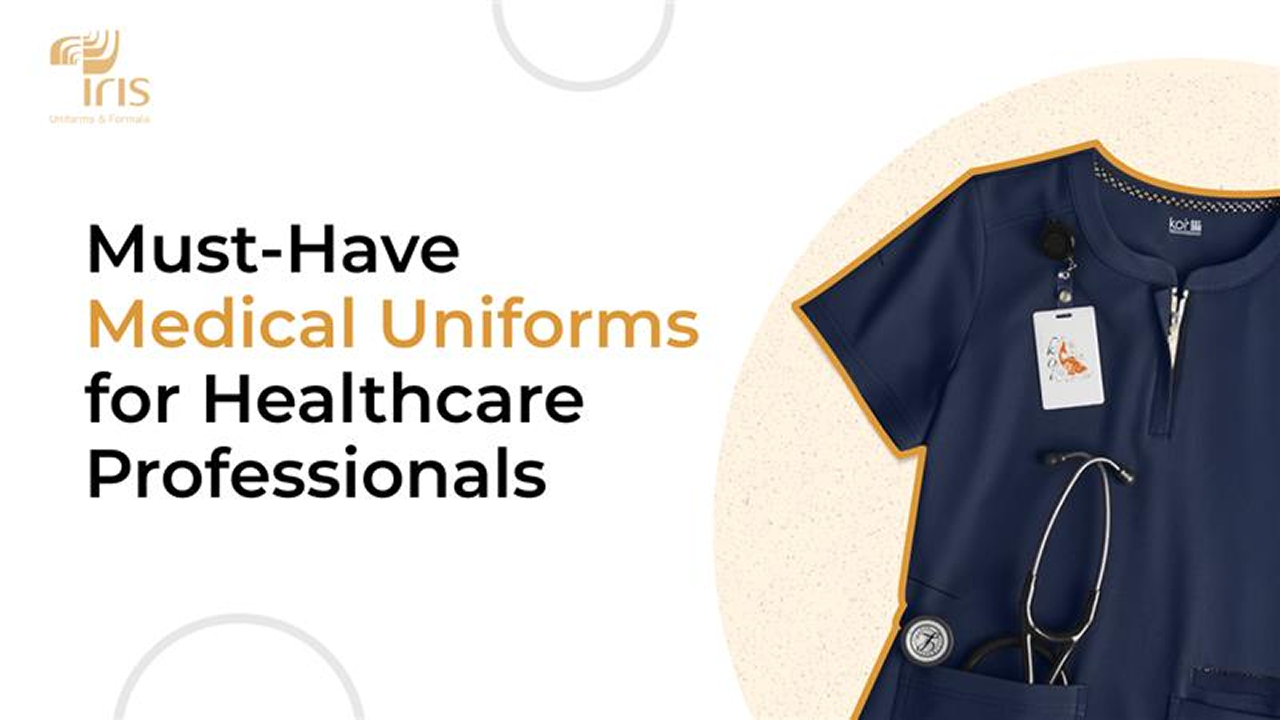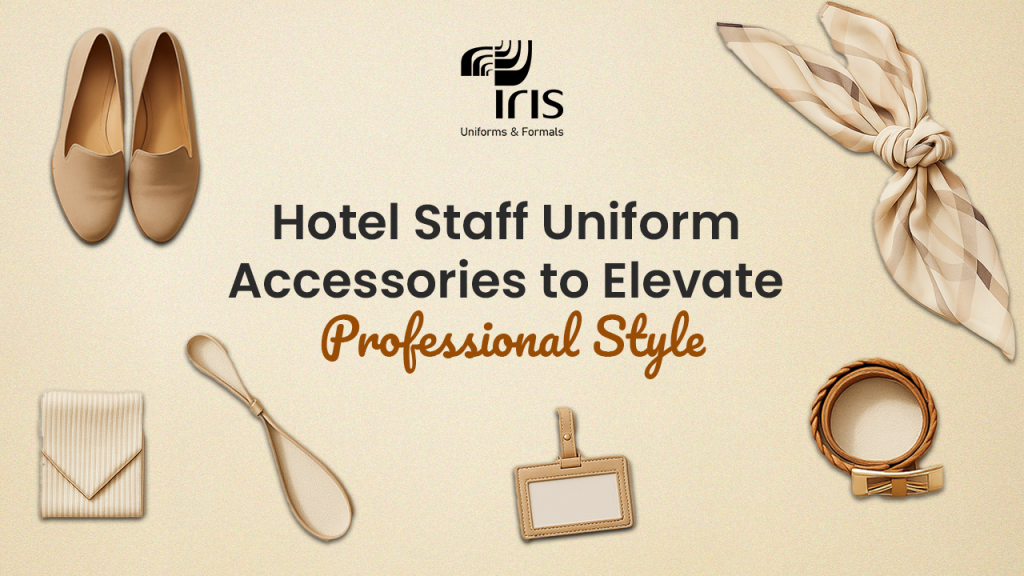
2025’s Must-Have Medical Uniforms for Healthcare Professionals
Have you ever noticed how each medical professional has a different way of wearing their uniform and wondered why? From the traditional scrubs to the protective gowns, every bit of medical uniform has a reason. These uniforms are not simply for looks; they are a means of hygiene, safety enhancement, and help patients recognize hospital staff more efficiently.
As we approach 2025, the medical uniform is transforming to suit the needs of modern healthcare. New designs enhance comfort, mobility, and even appearance – all without compromising safety. In this blog post, we’re walking you through the fundamentals of the uniforms for healthcare professionals today, including their identifying features and how they improve patient care.
Whether you are replacing staff uniforms or just interested in learning about what each uniform is all about, this guide will take a closer look at the fundamentals guiding the way forward in healthcare wear.
Must-Have Medical Uniforms for Healthcare Professionals
Hospitals can appear professional, safe, and facilitate easy location of departments and rooms by utilizing well-standardized and organized staff uniforms. The following are the main kinds of uniforms typically necessary in a hospital setting:
1. Scrubs
Scrubs continue to be the standard of medical uniforms, serving physicians, nurses, and ancillary staff. While in the question of why high quality scrubs matter the answer is they’re built for comfort and ease of movement during long shifts, while also playing a key role in boosting patient trust and professionalism. Scrubs come in every color of the rainbow and style and are utilized to identify departments and roles in healthcare environments. Modern scrubs use germ-resistant and fluid-repelling fabric to help keep you safer and cleaner. Additionally, custom designs make it possible to personalize, promoting a sense of identity and togetherness among employees.
2. Lab Coats
Lab coats are the epitome of professionalism in healthcare environments. They are usually worn over day-to-day clothing, providing an extra layer of protection from splashes and contamination. Lab coats are generally worn by physicians, researchers, and laboratory technicians. New developments involve lab coats made from eco-friendly materials and ergonomic designs for greater comfort.
3. Surgical Gowns
Used in the operating room, surgical gowns are sterile coveralls that envelop patients and medical professionals to prevent infection. They typically consist of fluid-resistant material and can be either disposable or reusable, depending on hospital policy. Fabric technology has improved gowns to be breathable and comfortable without sacrificing safety.
4. Pediatric Uniforms
Pediatric uniforms are designed to provide a welcoming and reassuring atmosphere for children and patients. Bright colors and fun designs are common in pediatric uniforms, which make pediatric healthcare professionals approachable and help alleviate children’s anxiety. Soft, breathable materials used in pediatric uniforms ensure comfort for healthcare professionals during extended shifts.
5. Emergency Medical Services (EMS) Uniforms
EMS uniforms are functional and durable, designed for the busy days at emergency medical units. EMS uniforms often have high-visibility elements and are made from materials that can withstand tough environmental conditions. Modern EMS uniforms also incorporate moisture-wicking and stretch fabric to increase comfort and mobility. Leading hospital uniform manufacturers now focus on blending safety, durability, and performance to meet the demands of emergency responders.
6. Nursing Dresses/Traditional Uniforms
Although scrubs are used extensively, traditional nursing dresses continue to be popular in some wards and institutions. The typical uniform consists of a dress, apron, and cap, which portrays the traditional professional look. Modern designs have revolutionized these uniforms with new styles and materials to ensure comfort and convenience.
7. Support Staff Uniforms
Support staff such as administrative staff, cleaners, and cafeteria staff wear functional, identifiable uniforms. They are designed to ensure that it is easy to identify all staff members and to encourage a cohesive and professional atmosphere. Fashionable designs focus on sustainable materials and are shaped to fit the body for extra comfort and lower environmental impact.
8. Technologically Advanced Uniforms
The use of technology in medical uniforms is growing. Technology-enhanced fabrics that incorporate sensors within them can monitor vital signs, monitor activity levels, and manage temperature, feeding real-time data back to health workers. Such innovations are made to enhance patient care and optimize healthcare workflows.
9. Eco-Friendly and Sustainable Uniforms
Sustainability is transforming hospital attire. Organic cotton, bamboo-blend, or recycled polyester uniforms are now being adopted for their reduced carbon footprint. These materials are kind to the planet, gentle on the skin, and designed to be both lightweight and durable. In other cases, even green packaging solutions are now available from suppliers, keeping a hospital’s environment friendly image intact from factory to delivery door.
10. Footwear and Accessories
Although not part of the uniform, shoes and accessories such as ID cards, belts, and support socks are required for comfort throughout the day and for professionalism. Slip-resistant soles, arch supports, and antimicrobial linings now define medical shoes. Coller accessories add a neat, clean appearance and contribute to workplace cleanliness.
Conclusion
With the advancing year 2025, uniforms in hospitals are taking on a new, functional position in the healthcare environment. Whether it is scrubs for comfort, lab coats with a crisp, professional look, or specially designed uniforms for paediatrics and emergency departments, each of them reflects care and responsibility.
Medical professionals are worthy of uniforms that respond to the exigency of their work and provide comfort and longevity. Selecting the optimal uniform for every profession doesn’t simply enhance day-to-day functioning, it fosters unity, reliability, and trust in every encounter.
If you’re planning to replace your uniforms this year, make it an informed choice. Talk to Iris uniform designers or a quality custom uniform supplier familiar with your staff’s special requirements. Get the right fit, material, and style, and your employees can look professional and be prepared every day.





